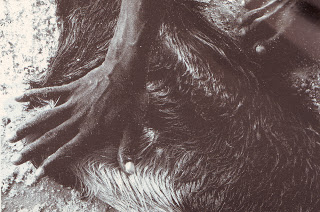Categories
[mc4wp_form id="493"]

Chamars – The Leather Workers Of Agra And Their Fascinating Hisory In Mughal India
Fashion is a statement you set for yourself, and you can choose to stay warm in style too. One of the things you can choose to wear is leather jackets, which will not only give you comfort but also keep you warm and in style. Humans started wearing animal skin as a way to keep themselves warm
Since the rise of civilization animals have been part of human life, both while they are alive and also when they are dead. In death, their skins are found of various uses, especially as leather products. Leather, simply, is preserved animal skin. The process of preserving animal skin is known as tanning – first, the skin of dead cattle – cow, buffalo, pig, goat, sheep, camel – is peeled though specialized expertise. The communities involved in leatherwork are known differently in different parts of India for example, Madigas in Andhra Pradesh, Arundhatiyars in Tamil Nadu and Chamars in Uttar Pradesh.
Chamars, a Dalit community has been known for their scientific pursuit, yet for which they have been hardly acknowledged. For examples, they were the first discoverers of the role of salt in keeping the wet skin from rotting. The natural tanning process adopted by the Chamars is largely eco-friendly. The salted skin is dipped into the powdered mixture of the bark of Tarwar plant. The Chamars discovered that the tannic acid of the Tarwar bark could be used to convert raw skins into leather. The treated skin is then put into a tub of lime. After a week it transforms into leather. The leather is then washed clean in a stream or a pond. To give a finishing touch to the leather the Chamars use the dried and powered fiber of a fruit called Karukkaya. The fiber is boiled in castor oil. On cooling, this solution is systematically applied to the leather to give it a polished, smooth look.
Chamars then transform this leather into shoes, sandals, ropes, bags and belts, and even musical instruments such as tabla. Chamars, however, are placed at the lowest end of the social hierarchy. They are denied respect and access to resources like education, land, and water. For historians, the history of Chamars is not significant because their labor and scientific pursuit are never treated as dignified. Yet the community has an interesting history.
It was the time during the rule of early Mughals in 15th century Agra, also known as the leather capital, the Chamars had begun an interesting journey.
Emperor Babur was the founder of the Mughal Empire in India. However, his son Humayun lost to dreams and opium, was not a worthy successor. To make matters worse, he had inherited a fractious kingdom and was forced to engage in battle. Sher Khan, a rebellious Afghan chieftain was soon to oust Humayun to become Emperor Sher Shah Suri founding the short-lived Sur dynasty. He led his soldiers to victory against the Mughals. Humayun barely escaped with his life, almost drowning in a river nearby. A bhisti, a low caste water carrier, rescued him and ferried the emperor to safety on an inflated buffalo skin. In a typical expression of gratitude, Humayun made him king for a day. The bhisti invited fellow leatherworkers from all over to participate in his good fortune, establishing the foundation for Agra’s considerable low caste population and its famous leather industry.
However, Agra’s leather industry received its main impetus during the time of Emperor Akbar, who decreed that his soldiers wear shoes. Till that time the Mughal army had fought barefoot. Shoe-makers were summoned from all over the empire and work began to produce hundreds of thousands of pairs per year. Besides the hard-wearing leather jootis with slightly turned up toes for the soldiers, there was also a huge demand for more delicate versions for nobles, their ladies and vast entourages. Besides shoes were the Mughal shields which at least for the common soldiers, were made of leather.
In the British period, the Agra Chamars (known as Jatavs) were the first to enter the manufacture of leather goods. Many became millionaires by supplying shoes and belts to the British army during World War II. That continued after independence as well. But by the 1970s, non-Dalit traders entered the field. They acquired army tenders and began to fabricate leather goods, forcing many Jatav families out of business.